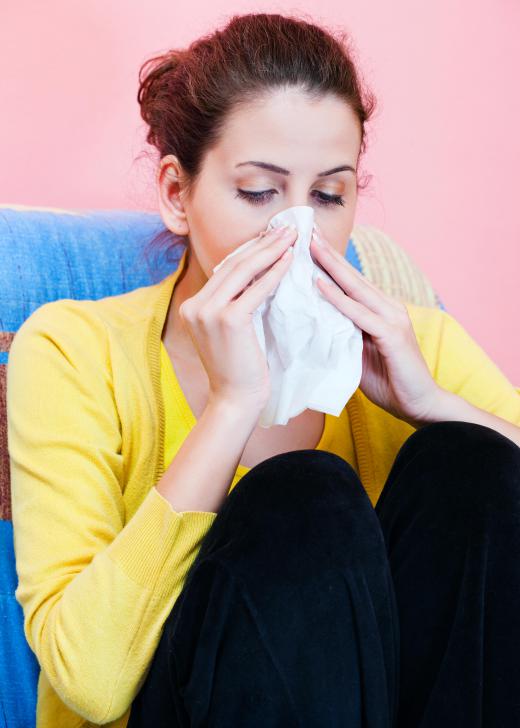What are Enzymes?
In biology, one of the factors that defines a living thing from an inanimate object is the organism's ability to carry out chemical reactions that are crucial for its survival. Even one-celled organisms are capable of hundreds of chemical reactions within their cell walls. Imagine the infinite amount of reactions that a large organism such as a human carries out. None of these reactions are possible without enzymes.
Enzymes are biological catalysts or assistants. Enzymes consist of various types of proteins that work to drive the chemical reaction required for a specific action or nutrient. Enzymes can either launch a reaction or speed it up. The chemicals that are transformed with the help of enzymes are called substrates. In the absence of enzymes, these chemicals are called reactants.

To illustrate the speed and efficiency of enzymes, substrates can be transformed to usable products at the rate of ten times per second. Considering that there are an estimated 75,000 different enzymes in the human body, these chemical reactions are performed at an amazing rate. On the other hand, in the absence of enzymes, reactants may take hundreds of years to convert into a usable product, if they are able to do so at all. This is why enzymes are crucial in the sustenance of life on earth.

Generally, enzymes work on substrates in one of three ways: substrate orientation, physical stress, and changes in substrate reactivity. Substrate orientation occurs when an enzyme causes substrate molecules to align with each other and form a bond. When an enzyme uses physical stress on a substrate, it in effect grips the substrate and forces the molecule to break apart. An enzyme that causes changes in substrate reactivity alters the placement of the molecule’s electrons, which influences the molecule’s ability to bond with other molecules.

Enzymes have active sites where they come into contact with particular substrates. The catalytic properties of enzymes are a cyclic process. Once a substrate has come into contact with the active site of an enzyme, it is modified by the enzyme to form the end product. Once the process is complete, the enzyme releases the product and is ready to begin the process with new substrates. Enzymes are never wasted and always recycled.

The absence of enzymes is responsible for many diseases. In humans, a tragic disease called phenylketonuria (PKU), which causes severe mental retardation and even death in infants, is the result of the absence of one type of enzyme. Tay-Sachs disease is a similarly tragic result of an enzyme deficiency. It causes retardation, paralysis, and often death in early childhood when left untreated.

Our ability to alter enzymes by inhibiting their functioning abilities has resulted in hundreds of life saving drugs. One example is penicillin, a well-known antibiotic that can cure syphilis, pneumonia, and other illnesses. Penicillin works by bonding to the active sites of the disease-causing bacteria’s enzymes, ultimately destroying the bacteria’s ability to survive and reproduce.
AS FEATURED ON:
AS FEATURED ON:















Discussion Comments
How do enzymes change their active sites during induced fit hypothesis?
It really worries me when I read some of these questions.
My friend told me that you need to poop before you digest lactose. Is that true?
If you have two enzymes and they are stored at 5 degrees celsius but one of them is boiled, and then they are put in their optimum temperature and the students are going to see the activity of the reaction of an enzyme controlled action. Write about both enzymes after the experiment. Please help me answer this question!
Are these enzymes the fundamental structures of our body? If so, do they form our genitals?
why does enzymatic browning occur in fruits like apples?
What criteria does an enzyme have to satisfy?
Are enzymes in a human being produced within the human body or are humans born with a number of enzymes within their bodies? How are these enzymes in the human body depleted and can proper diet replace damaged or lost enzymes or does proper diet enable the human body to produce new enzymes to replace the damaged or lost enzymes?
most enzymes are found in what kinds of compounds?
Can we consume expiry enzyme?
enzymes are proteins.
enzymes are globular proteins, to - anon114006.
what are the uses of enzymes?
Enzymes are:-
(a) Micro Organisms
(b)Proteins
(c) inorganic Compounds
(d) Moulds
i don't know this answer. give me answer.
what are two attributes of enzymes in catalyzing chemical reaction and in metabolic pathways?
enzymes are the coolest thing i have ever seen in my life. i was talking about them the other day to a friend and they loved them too.
Lock and Key describes the relationship between substrates and enzymes. Enzymes are like locks and substrates are like keys. Only certain substrates can fit into certain enzymes for the desired reaction to occur.
Wow, enzymes are cool!
What does Lock and Key mean in enzymes?
enzymes in the liver are raised. what does this mean?
a clogged artery in the back area can not be treated because of enzyme problems, can you explain what that means
Post your comments